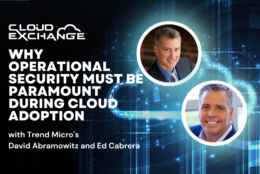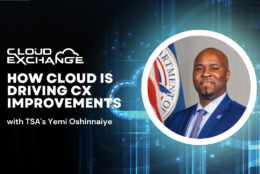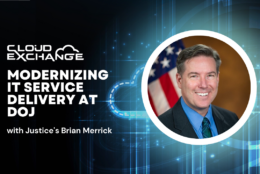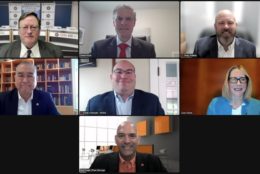SDFM The Business of Defense
-
Agencies need to define backup and disaster recovery strategies as part of their cloud migrations, which requires due diligence on the part of federal data owners and managers, explain TVAR Solutions’ Sam O’Daniel and Veritas’ Joye Purser.
June 21, 2023 -
As law enforcement and national security agencies adopt cloud services, their sensitivity to cyber incidents makes executing cybersecurity basics and transformational approaches in tandem essential. We share advice from two Trend Micro experts.
June 21, 2023 -
Find out how these two Homeland Security agencies embraced cloud and are moving into third-generation cloud tactics to gain operational IT efficiencies and serve users at remote locations nationwide. We talk with cloud experts from CBP, ICE and Leidos.
June 21, 2023 -
Embracing cloud, and new technologies like AI, make providing real-time data to clinicians and patients in federal health care settings possible, explains Leidos Srini Iyer. He shares insights on both the security challenges and the opportunities.
June 21, 2023 -
Eric Stein, the State Department’s deputy assistant secretary for the Office of Global Information, is looking at ways to use emerging technology to improve FOIA processing governmentwide
June 21, 2023 -
TSA Chief Information Officer Yemi Oshinnaiye says one of his top priorities is improving customer experience across all agency missions.
June 20, 2023 -
From forecasting IT enterprise requirements to implementing a zero trust architecture, DoJ’s IT modernization approach is focused on enhancing service delivery across its legal and law enforcement components. We get the inside baseball from DoJ’s Brian Merrick on what the department has in store.
June 20, 2023 -
Although agencies talk less now about moving to the cloud strictly to save money, they do need to define how they value digital transformation, explains Splunk’s LaLisha Hurt. She shares three tips to help agencies do just that.
June 20, 2023 -
As agencies’ hybrid infrastructures make the delivery of high-level and edge services from the cloud possible, IT teams must apply consistent metrics to monitor performance and cost. Leidos’ Lakshmi Ashok shares the four metrics you’ll want to track.
June 20, 2023 -
Edge computing happens in the kinds of environments where you can’t necessarily manage them moment to moment: the bottom of the ocean, outer space, battlefields, etc. Government agencies need to be able to control, manage and scale the environment remotely, without having to send humans to far off or dangerous places. Managing at scale at the edge requires a different approach than traditional datacenter locations.
June 19, 2023 -
During this exclusive webinar, top federal technology executives and industry experts will discuss innovations and successes in government technology strategy.
June 19, 2023 -
Data offers a better solution for bolstering supply chain resilience. With a robust system, it’s possible to consolidate data across the supply chain from disparate sources using automated workflows that are supported by artificial intelligence.
June 19, 2023 -
Dr. Herminia Palacio is president and CEO of the Guttmacher Institute, which seeks to expand reproductive rights and Robin Marty is director of operations at West Alabama Women's Center, which had to cease offering abortions nearly 12 months ago.
June 16, 2023 -
With the right approach to models, boundaries and governance, it’s possible to develop trusted artificial intelligence disciplines, say IBM’s Mark Johnson and Ingram Micro’s Tony Celeste. They share how for The Power of Technology series.
June 16, 2023 -
Martin Rieger, the chief solutions officer and chief information security officer a stackArmor, said the caring, feeding, maintenance and continuous development of federal cyber regulatory and policy requirements is necessary for success.
June 16, 2023















